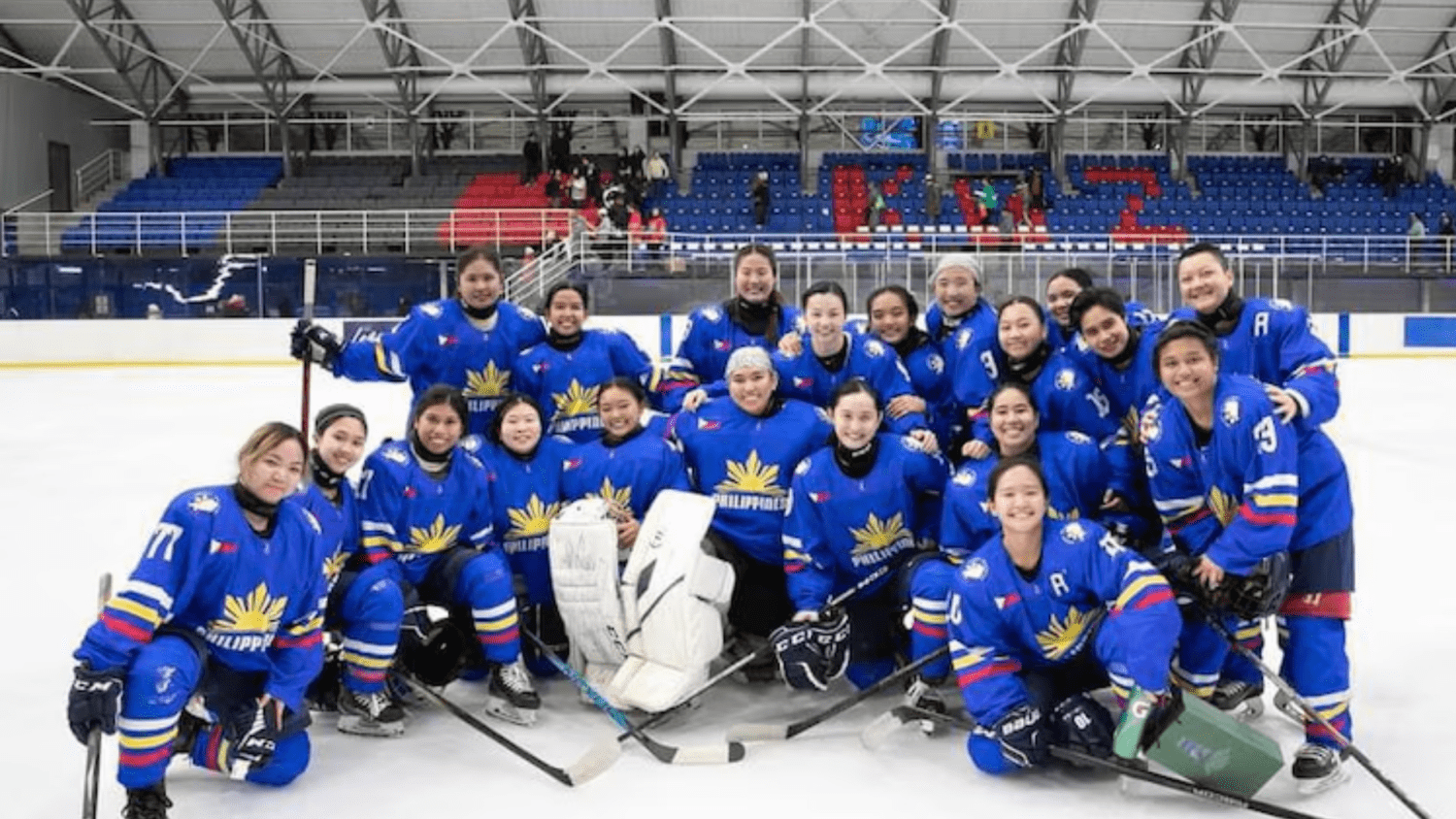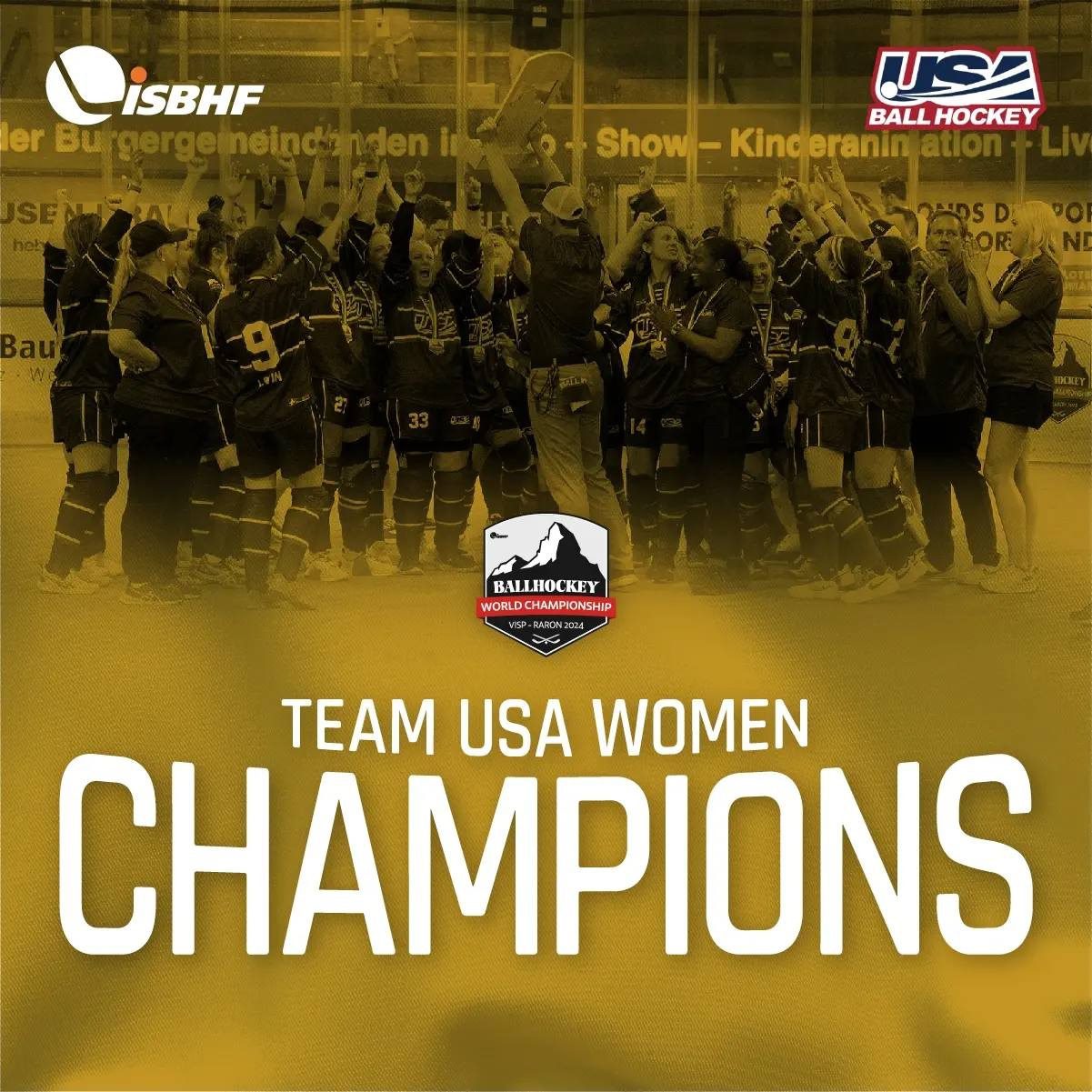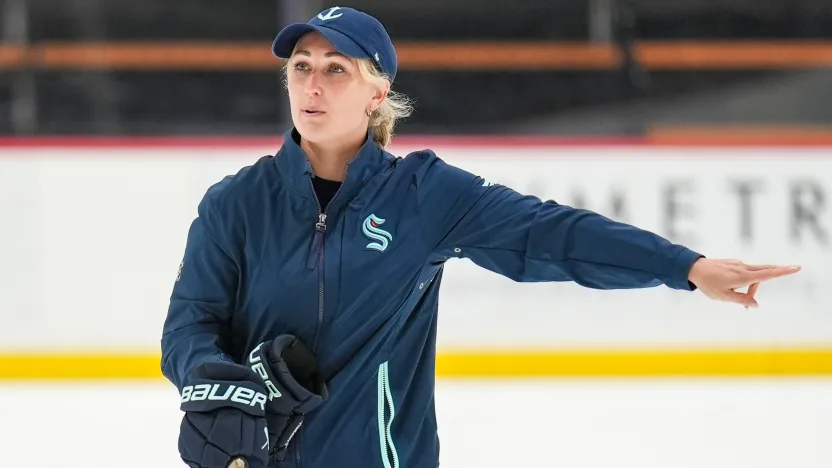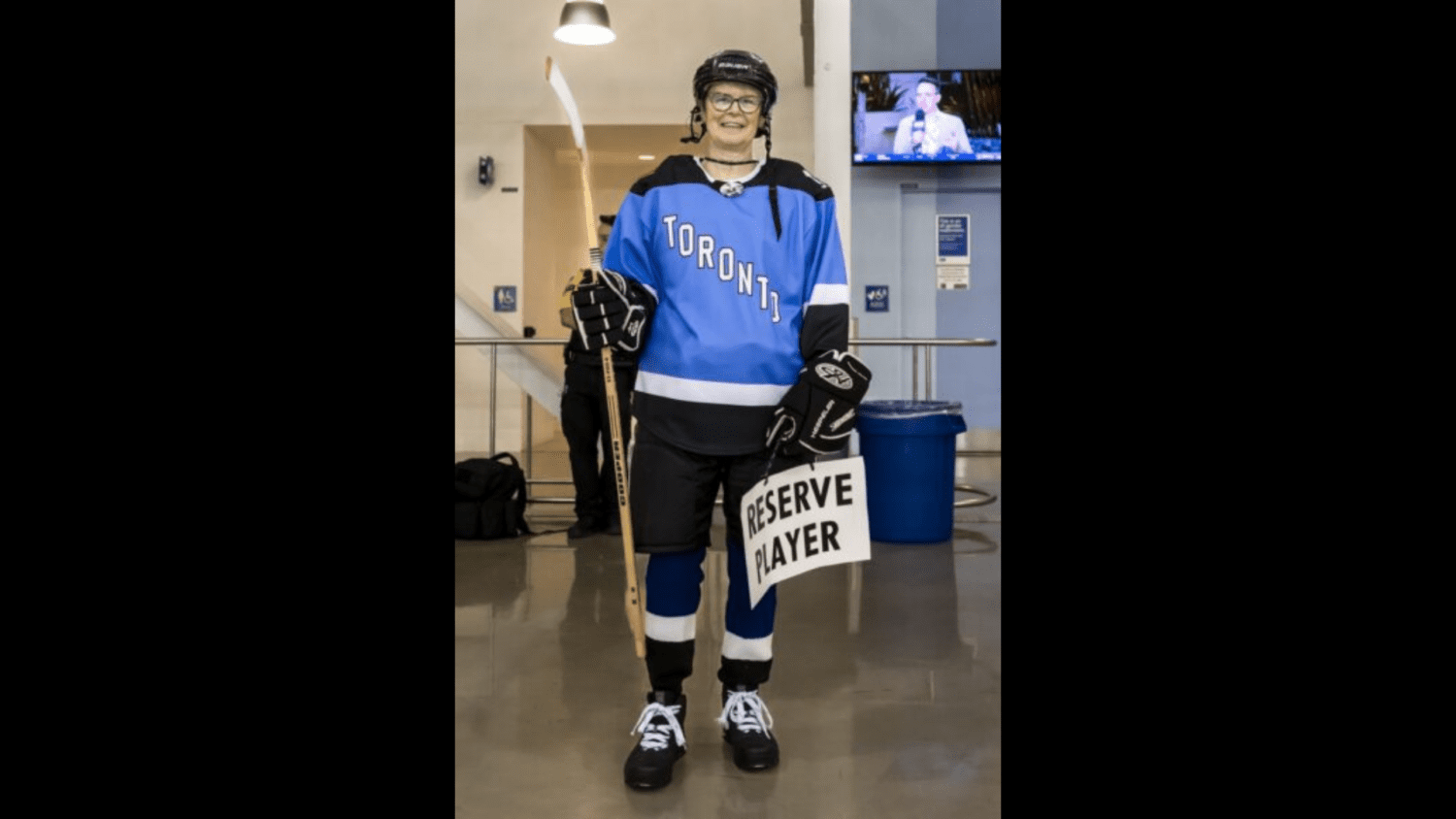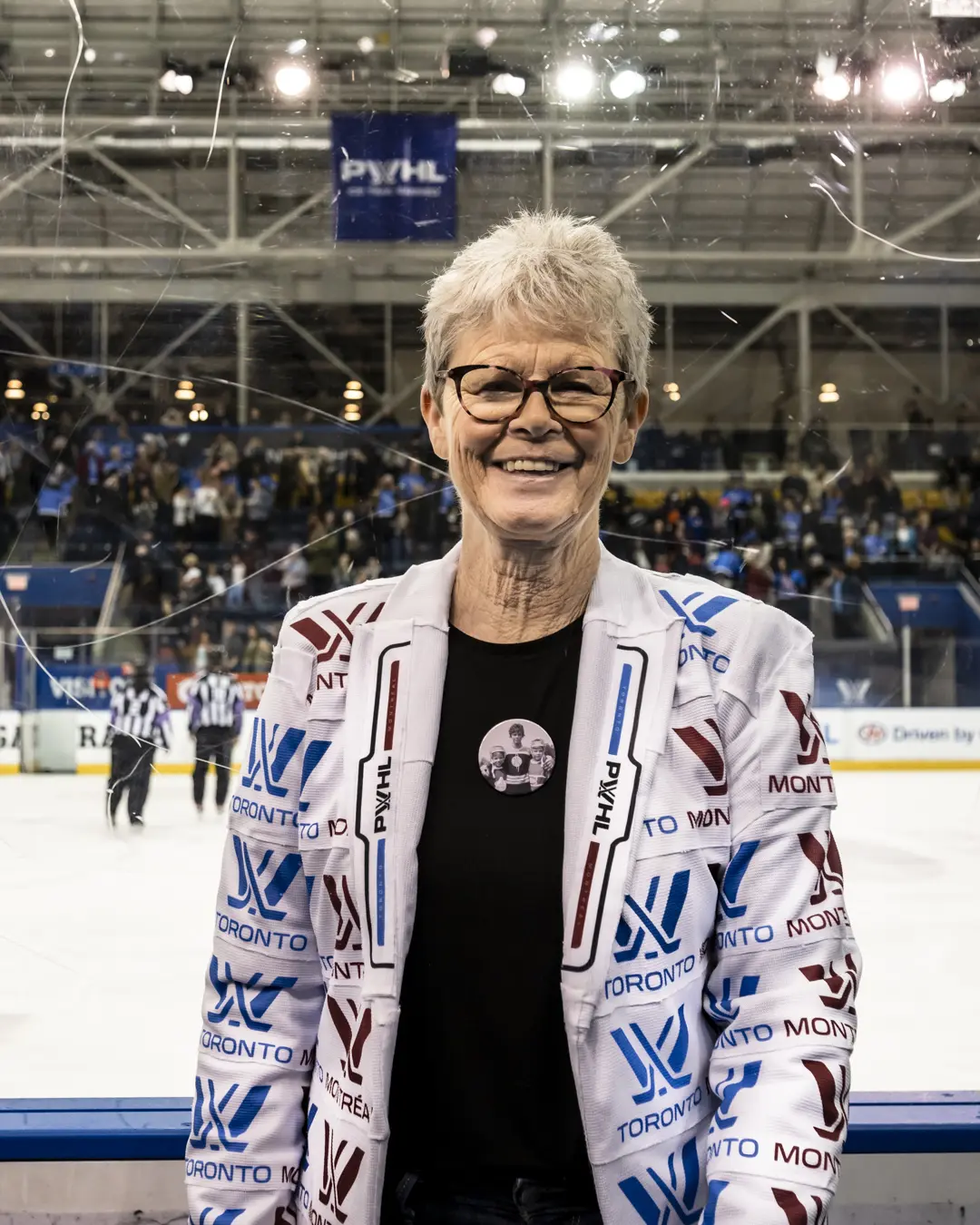Holding a celebrated place in Canadian hockey lore, the extraordinary life of Sami Jo Small is one filled with achievement, inspiration and perseverance. With a sterling ice hockey career that has transformed her into a Canadian cultural icon, Small’s heroics encouraged an entire generation of girls to lace up their skates, building on a remarkable chapter in the game’s evolution.
Having first gained attention as a goaltender for the men’s ice hockey team at Stanford University, a prestigious school, which has produced a remarkable multitude of notable athletes, Small, belongs to a highly celebrated list of Cardinal alumnae. Such a group includes the likes of Jennifer Azzi, John Elway, Janet Evans, Julie Foudy, Katie Ledecky, James Lofton, John McEnroe, Mike Mussina, Kelley O’Hara, Jim Plunkett, Kerri Walsh and Tiger Woods, among others.
Akin to the aforementioned, Small would leave an incredible mark in sport. From between the pipes to the front office, employing a tremendous character and a strong sense of loyalty, enhanced by a genuine appreciation for fans and players of all ages, her standing as one of hockey’s icons is without dispute. While her exalted career consists of a seemingly endless list of milestones and achievements, including gold from the Winter Games, numerous IIHF Women’s World Championship titles, along with domestic glories, highlighted by the Esso Women’s Nationals and the Clarkson Cup, plus the Queen’s Diamond Jubilee Medal, there is another worth noting.
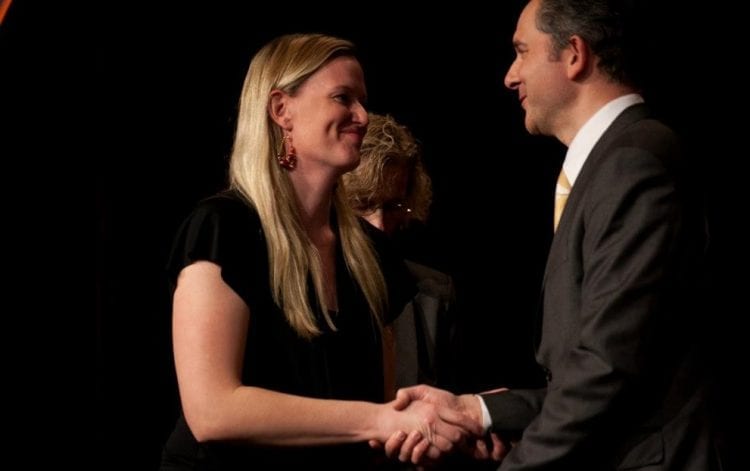
Perhaps Small’s most profound contribution to ice hockey involves the formation of the Canadian Women’s Hockey League. Coming at a time when the gregarious goaltender was at a career crossroads, looking to employ a more cerebral approach to the game, while pondering the possibility of competition at the Vancouver 2010 Winter Games, the revelation that the original NWHL would cease operations was highly unanticipated.
“I knew I needed to change up my training regimen if I was going to re-gain my spot in a playing position. So, I started training in the spring with Jamie McGuire at York University and started to really see some improvements. For the first time, I had a goalie coach to specifically coach me.
Up until that point, I only had the privilege of seeing the Team Canada goalie coach on occasion at camps. I registered through the National Coaches Certification Program to take my High Performance coaching in order to really study the game from all positions with hopes of making the Vancouver Olympic team. I dedicated everything to being the best goalie and teammate I could and then the news dropped.
There would be no more NWHL.”
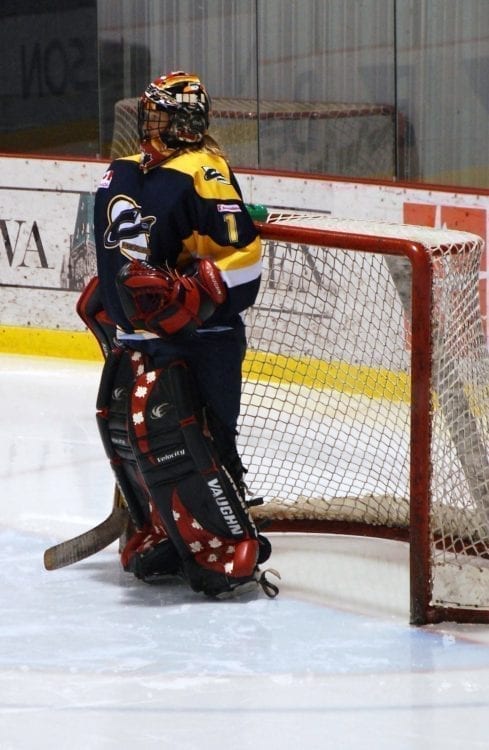
Motivated to create a new league, ensuring that the growth of the professional game since the Nagano Winter Games would not fall into stasis, Small’s focus quickly became part of a collective effort, establishing the roots for the “Sensational Seven”. Featuring the likes of Jennifer Botterill and Mandy Cronin, along with Lisa-Marie Breton-Lebreux, Allyson Fox, Kathleen Kauth and Kim McCullough, the group would gain a place of prominence in the millennial roots of the professional game.
From the outset, Botterill, like Small, also grew up in Winnipeg. Both roommates as their competitive careers took them to the Greater Toronto Area, their residence quickly became the site of the new league’s initial headquarters. Undeniably, their collective presence provided a tremendous credibility, setting the foundation for a new chapter in the game, enabling prospective players the opportunity to pursue the dream of competing past university play.
“I knew I could not let that (the end of the NWHL) happen, I knew I needed a place to play in order to better myself as a goaltender and so I did everything I possibly could to ensure that we had a league where I could hone my skills. With a lot of help, from a lot of people, I set up the headquarters in our office at home. I was living with Jennifer Botterill at the time and she willingly helped as much as she could as well.
We met with prospective sponsors, booked ice and referees and created a Board of Directors. Everything was done so quickly and without the player reps and volunteers from each team, nothing would have been up and running by September.”
Fellow goaltender Mandy Cronin, whose career would eventually involve, becoming the General Manager of the Buffalo Beauts in the new NWHL, which launched in the late 2010s, also holds early roots among this celebrated Seven. In a moment of happenstance, yet destiny, Cronin, who plays ball hockey in the off-season, ran into Michael Salomon, another competitor on the slab.
Quickly fascinated with this remarkable sporting movement, Salomon supplied an entrepreneurial savvy and established a key structure which allowed Small’s dream to become reality. Becoming the head of the league’s first Board, Salomon holds an important place in the lore of the Canadian Women’s Hockey League, recognized by Small as the integral piece to the puzzle,
“That summer I spent nearly 50 hours a week just working on the CWHL. Our biggest asset came in the form of phenomenal board members led by Michael Salomon who gave so willingly of their time to help us towards our vision. I give Michael full credit for creating the league as he had the business acumen to ensure that would had a complete business strategy moving forward.
Working alongside Michael as Vice-Chairman of the league was an absolute pleasure and seeing how much work he was dedicated to our dream was incredible. He had a young family and a young daughter who should know just what an integral part her dad played at such a critical time in women’s sports in Canada.”
With the autumn of 2007 heralding a new chapter in Canadian women’s ice hockey, change was certainly a key theme in Small’s hockey odyssey. From the outset, her club team, the Toronto Aeros, were rebranded as the Mississauga Aeros during the final NWHL season.
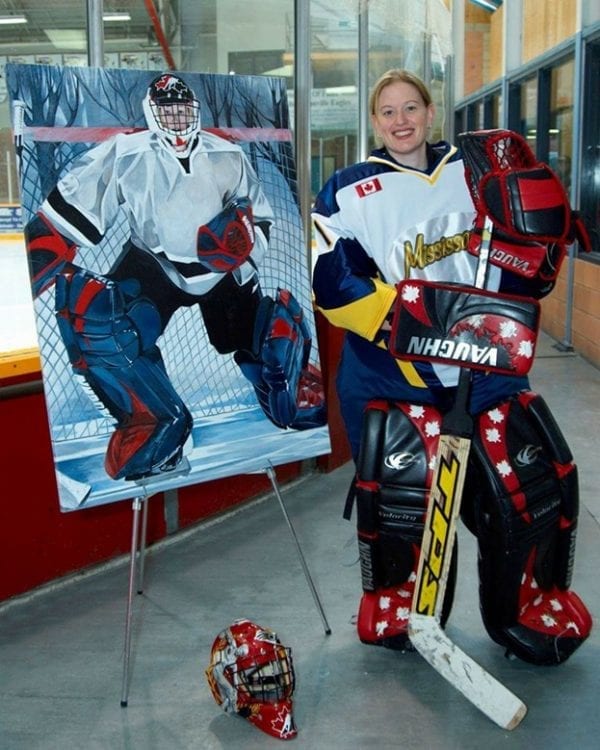
Among the charter teams for the inaugural CWHL season, Mississauga would welcome a new head coach to the fold, as Stephanie White amassed a respectable 20-7-0-1 mark, while Jennifer Botterill captured the scoring title, becoming the first recipient of the Angela James Bowl. Small, who shared goaltending duties with Sarah Love, would win nine games, tied with Tania Pinelli for fourth in the league, including a pair of shutouts and a solid 1.95 GAA, also placing fourth in the league, respectively.
“That entire first season was a blur as I tried to keep up my training, work to provide the funds necessary to ensure sponsorship of the league, ensure operational component to each game, while still trying to perform on the ice under a new coach, Stephanie White. It was a tough first season. However, we essentially, had the same team as the prior season, albeit with some new faces, and one major new addition, Cherie Piper.”
Following up her one season stint with Mississauga by taking on coaching duties at Toronto’s Ryerson University, White also took on a role as bench boss for Canada’s women’s under-18 team during the 2008-09 campaign, adding to the Chiefs’ impressive Team Canada connection.
Unfortunately, Small’s connection with the national team, a highly celebrated run that spanned over a decade reached its shocking conclusion. With the national team opting for Shannon Szabados prior to the 2008 IIHF Women’s World Championships, a move that eventually signified a passing of the torch between two goaltending luminaries, it was a black cloud which hovered over the achievement of the CWHL’s inaugural season,
“I travelled with Team Canada to the 4 Nations tournament, and beat the Americans, but got the call in February of 2008 that they were going with Shannon Szabados as the third goalie for the 2008 World Championships. I was devastated. All this time and effort to train and compete and create a league seemed all for naught.”
While Small’s character and tenacity allowed her the strength to persist, remaining a strong leader and valuable component of her Mississauga team, the inaugural season still brought more challenges. Although Mississauga and the Brampton Thunder, Small’s former club team, clashed in the inaugural CWHL championship, the postseason brought with it higher stakes.
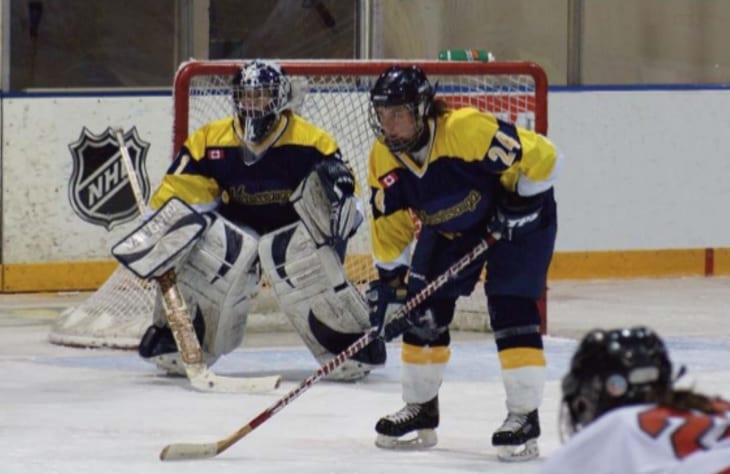
Of note, the finalists in the league’s inaugural championship would qualify for the Esso Women’s Nationals. With Mississauga facing off against the top seed Montreal Stars in the semi-finals, a freak accident in the third period of the March 2, 2008 contest, nearly brought an abrupt end to Small’s season.
Suffering a torn MCL, Small refused to leave the crease. Remaining between the pipes for the rest of the contest, she managed to tolerate the high level of pain, denying Montreal in overtime and then six consecutive saves in the shootout. Although there was still the matter of competing for the inaugural CWHL championship, the courageous effort proved to be Small’s finest hour,
“After picking myself up, I realized I wanted to still show the coaches how I was capable of performing on the big stage. We beat the Etobicoke Dolphins in the first round of the playoffs and then headed to Montreal to play against my long-time goalie teammate and Canada’s top goaltender, Kim St Pierre, and her Montreal Team for a spot at Nationals.
We were just the Mississauga Hockey Club as none of the teams had names. We were not sure what the legal situation was with the old names as of yet.
It was a two game series. We won the first game despite being the third ranked team in the league against the top team Montreal. They included Kim, Caroline Ouellette, Katie Weatherston, Angela Ruggiero and a 16-year-old Marie-Philip Poulin. In the third period of a tie game, Weatherston drove the net and landed on top on me. I heard my knee pop. I had never experienced such pain. I had torn my MCL.
However, with only minutes left in the game, I wanted to finish what we started. We made it into overtime and then into a shootout. I could go down, but there was enormous pain trying to get up. I just tried to focus on the puck and not the pain. In the end, Jen Raimondi (now Moad – who works in the NHL) scored the winner and we secured our spot, along with the other CWHL representative Brampton, at the final ever Esso Women’s National Championships.”
Sadly, the 2008 edition of the Esso Women’s Nationals represented a scenario of two steps forward and one step back. Having been a fixture of women’s ice hockey in Canada since 1982, the Abby Hoffman Cup represented a proud pinnacle for so many players; the event would reach its unexpected zenith. While the event featured a pair of teenaged future stars in the likes of Brianne Jenner and Natalie Spooner donning the Mississauga jersey, their first exposure to elite level senior hockey on a national scale, it would prove to be the event’s greatest legacy.
Bridging generations, as evidenced by the presence of Jenner and Spooner, the future would see them playing for the Clarkson Cup instead. While the Esso Women’s Nationals were reinvented as the Esso Cup, representing the top tournament in Canadian midget girls’ hockey, 2009 represented the rather abrupt end of an era. Presenting another challenge for Small and the CWHL executive, change once again an inevitability, the short-term focus was to cheer on a Mississauga team looking to emerge with a historic national championship.
“Hockey Canada had announced they were no longer going to put money into Senior Women’s Hockey so the following year, the CWHL would have to find a way to duplicate the tournament on our own dime. It was bittersweet knowing that Hockey Canada was taking their money out of a championship tournament and that the following season we would have to find the money to create that ourselves.
With my leg in a brace, I almost did not fly to Charlottetown, however, after getting over my own disappointment, I joined my team and attempted to be the number one cheerleader. I cheered my friend and goalie partner Sarah Love to an incredible performance.
We played against the WWHL’s top two teams, Minnesota and the previous champions, the Calgary Oval X-Treme. Brampton upset Calgary in the semi and we made it past Minnesota. This pitted us against our main rivals and my old team, Brampton, in the finals. We had (also) called up young 17-year-olds Natalie Spooner and Brianne Jenner from the junior leagues to join us. It was a hard fought final and Sarah Love played an incredible game. Spooner had to leave after the 2nd period to catch a flight to her PWHL game back in Toronto and Cheryl Pounder was nursing her three month old baby between periods.
Our stars included Jennifer Botterill, Cheryl Pounder and Sommer West amongst others. Playing against (Brampton’s) Jayna Hefford, Lori Dupuis, Vicky Sunohara, Gillian Apps, Kathleen Kauth, Molly Engstrom, Bobby Jo Slusar and Cindy Eadie in net. Eventually, Cherie Piper scored the overtime winner on National TV. I hobbled onto the ice to celebrate an incredible win. I had mixed emotions as I was so incredibly proud of our team and proud of Sarah, however, wished I had contributed.
I was so happy for our team. The emotions were not the same as my three previous National Championships because I did not play, but I was still proud. Proud of the tradition we continued and how we picked up the pieces from the previous season. Cherie Piper had lost her father that year and the team really rallied around her.”
The inaugural CWHL championship added to the rivalry between Brampton and Mississauga, clearly the finest from the inaugural NWHL season. In one of the most remarkable games ever contested in league history, regulation resulted in a 3-3 tie, testament to the high quality of play from both teams. While the game-winning tally, deciding the first-ever CWHL championship, was scored by Molly Engstrom, also a member of the US national team, the legacy of that game holds a different meaning for Small.
As the postseason saw Sarah Love became the second Mississauga goaltender to suffer a postseason injury, taking place during a highly tense third period, Small, in her brace, showed a sense of loyalty that comprises part of her hockey values. Setting foot on the ice, despite the discomfort, she would accompany a distraught Love back to the trainer’s table, holding her hand, displaying an empathic gesture of friendship. With Megan Takeda between the pipes for Mississauga, she would play valiantly for 12 minutes before surrendering the historic goal to Engstrom.
“We then returned home to play Brampton again in the new CWHL inaugural championship game. Played in Brampton in front of a sold-out Powerade Centre thanks in large part to the support of Susan Fennell, now the mayor of Brampton who had been the commissioner of the NWHL. Susan is the reason the old NWHL existed and had put in so much time and effort to make that league work. Despite her disappointment, she should still have a great place in the history of women’s hockey.
Once again, Sarah Love was on fire, until she collided with Jayna Hefford in the third period in a 3-3 tie game and had to be carted off the ice. She tore her MCL, PCL and ACL and was out for an entire year afterwards.
When the incident happened, I hobbled onto the ice to help Sarah from the ice surface to the dressing with our trainer Claire Biafore. I held Sarah’s hand as she lay in full gear on the trainer’s table awaiting a ride to the hospital, as we heard the news that Brampton had scored. Our call-up third goalie went in and played great, but Brampton ended up scoring in overtime to win that Championship.”
In spite of a difficult loss to Brampton, bringing a conclusion to the inaugural CWHL season in which there was a balance of both, achievement and heartbreak, high emotion throughout, a profound feeling of inspiration was evident in Small’s reflections. Acknowledging the impact of transition, a sense of rebuild, the essence of teamwork is what serves as the defining factor during the inaugural CWHL season.
“It was a transition year for so many, but in the end, our team persevered and won with the help of the entire team. Including staff and volunteers. Beating Montreal in the semis is still one of my greatest victories for the stage in my career.
Best of all, people stepped into new roles and that was one of the closest teams I have ever been a part of. Reflecting nearly two decades later, I am still close with many of the friends I made on that team.”
Stay tuned for Part 2 and 3 of the series on Sami Jo Small!
“All quotes obtained first hand unless otherwise indicated”
Featured image by Krista Windsor
[adrotate group=”1″]
Related Articles
Categories
Recent Posts
[adrotate group=”2″]



